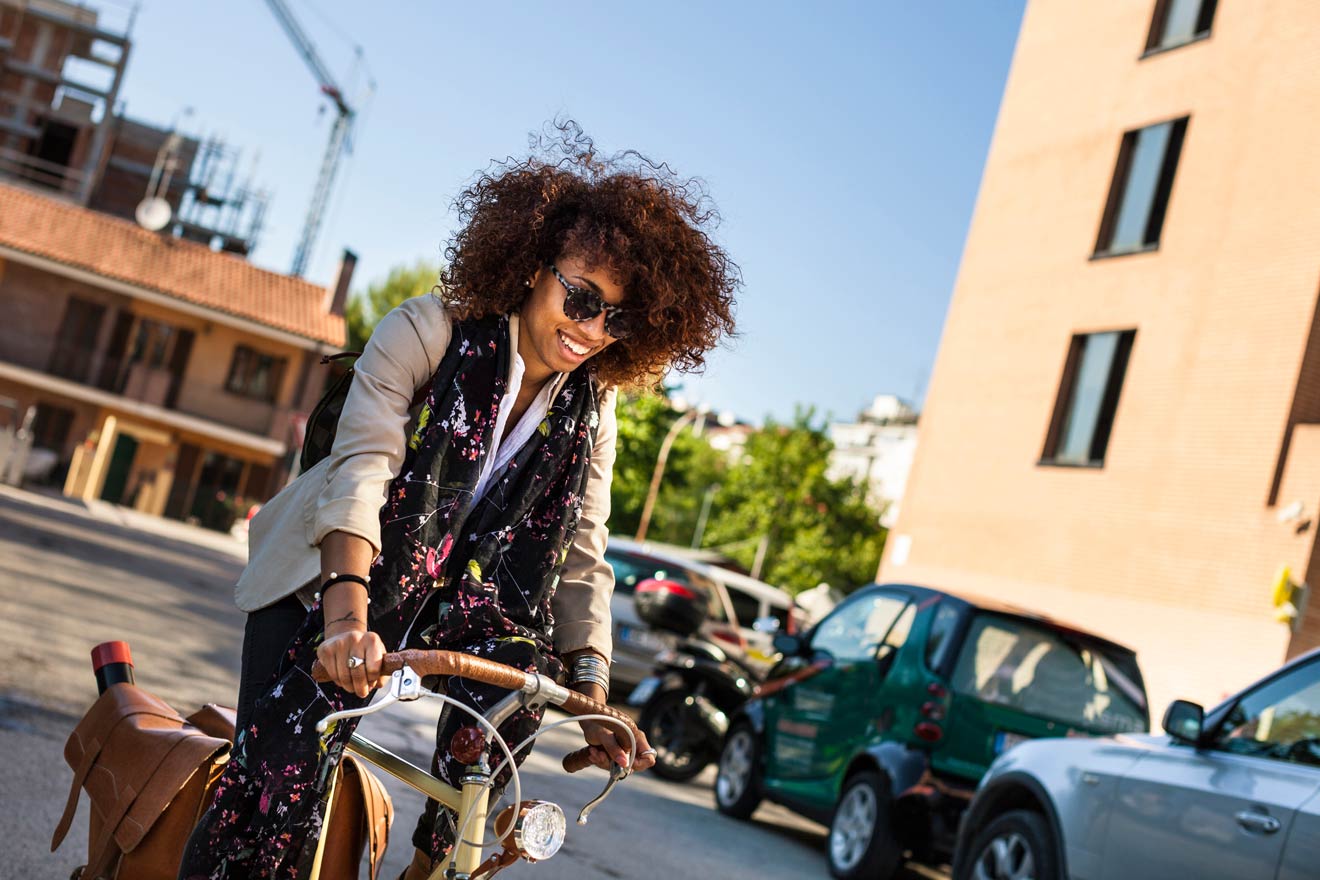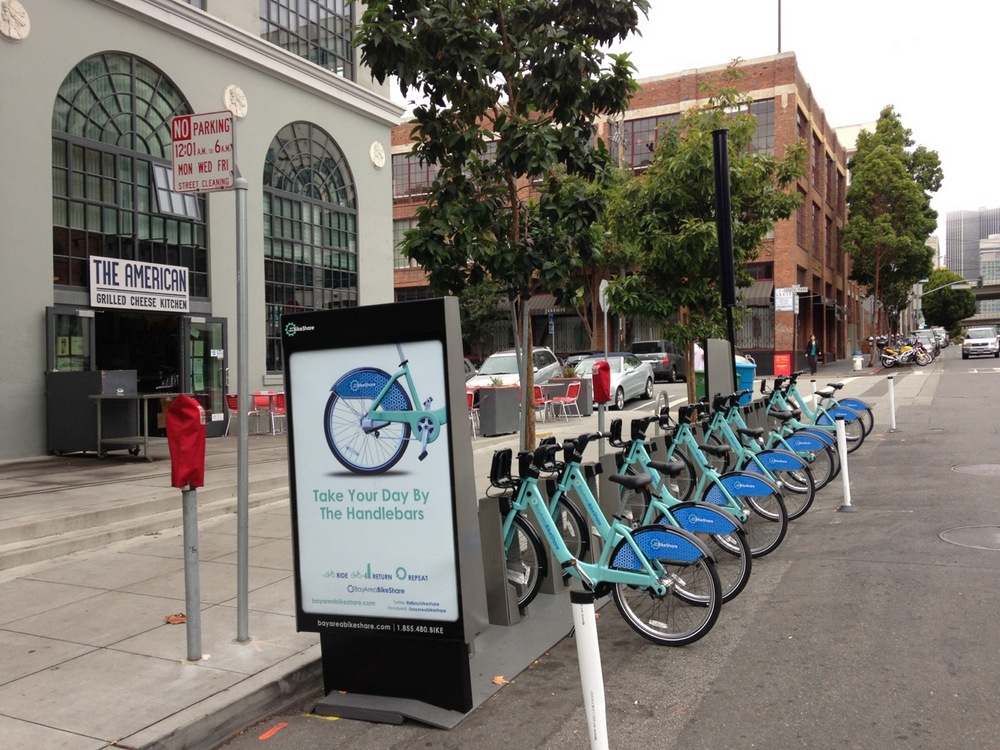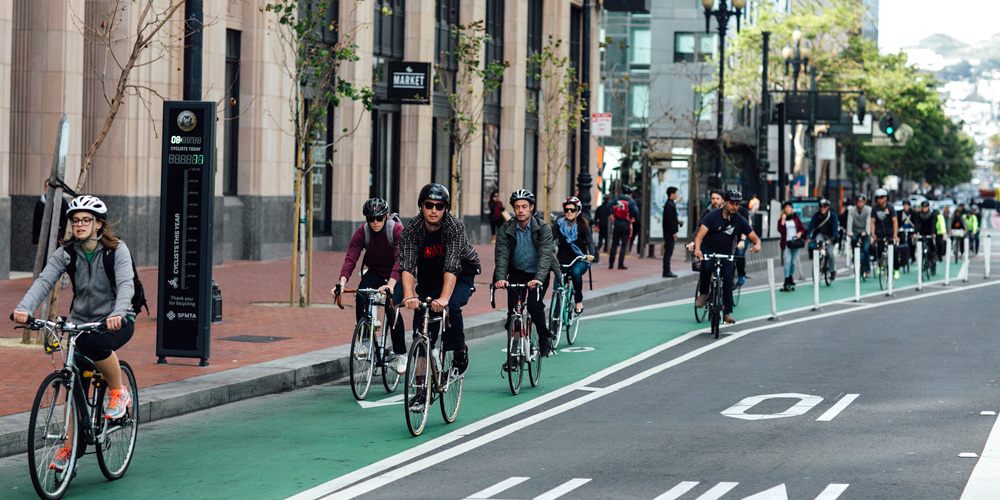
Americans have long had a “love affair” with their cars, but that is changing with the millennial generation, who show a preference for living closer to jobs and are less interested in car ownership. This shift is challenging the 50-plus-year-old assumption that cars are king and creating a market demand for a more connected alternative — for “complete streets,” places where cars, bikes, pedestrians and public transit coexist.
We already know that cars took over the way cities are designed and built the past five decades, but with climate change, environmental concerns and quality-of-life issues, people are increasingly rethinking their attachment to the automobile, and jumping onto bicycles to get them around city and town.
A growing number of millennials are forsaking cars altogether in exchange for bikes for their daily commuting needs.
Millennials want more options
Kiran Parmar, a 26-year-old Bay Area native and graduate student at the University of San Francisco, got rid of her car shortly after moving to San Francisco.
“Having a car in the city was the worst experience,” said Kiran. “With parking tickets and break-ins, the anxiety was always weighing on me. Plus, having a car made me sort of lazy.”
Kiran, a San Francisco Bicycle Coalition volunteer, bikes to work in the morning, to school after work, and on weekends she bikes to the park or the beach. “I am on my bike all the time,” she says.
Millennials like Kiran now make up 26 percent of the population in the U.S., and they will have a strong influence on the future development of transportation systems. Studies show that this multimodal generation wants better transportation options, including affordable, reliable public transportation with real-time updates; improved biking and walking conditions; and technology-enabled services like bike sharing.

Affordable, convenient travel
Commuting and getting around by bike offers countless benefits, from reducing carbon emissions and improving health and wellbeing, to reducing accidents and providing an affordable, convenient way to get around town.
Biking is also good for the economy. Studies of neighborhood commercial corridors show that “customers who arrive by bike to shop spend 24% more per month than those who arrive by car.” Bike parking can be a powerful economic development engine for local communities. Copenhagen, Denmark, estimates that it saved $60 million in annual health care costs after completing their “cycling superhighway,” and “by driving 20% less than other cities, residents of Portland, Oregon keep $800 million within the local economy.”
New York takes the lead
Not surprisingly, U.S. cities that have invested in biking infrastructure report an increase in bike usage. Biking in Washington D.C., has increased by 120 percent in recent years, and New York, Bicycling Magazine’s 2014 No. 1 best American city for biking, has added 400 miles of bike lanes including 50 miles of protected bike paths. As a result, bike commuting has doubled.
Still, biking in the U.S. lags far behind bike-friendly European cities where biking is seen as a more valid form of transportation. This country is starting to make great strides, but clearly, car-loving Americans have a long way to go.
Losing congestion with “road diets”
Change is coming though. Some cities are putting their streets on “road diets” by removing car lanes, creating more space for bike lanes, widening sidewalks, building bulb-outs, beautifying streets and implementing traffic calming measures. Road diets, which often consist of using paint to restripe the roads, “are as cheap and cost-effective as infrastructure improvements get.”
Best of all, road diets can reduce traffic accidents by an average of 29 percent, according to the U.S. Department of Transportation, and are responsible for cutting crashes nearly in half in smaller towns.
Valencia Street in San Francisco’s vibrant Mission District was put on a road diet, resulting in 20 percent fewer collisions and a 140 percent increase in the number of bicyclists.
With so many obvious benefits, the question is why aren’t more Americans augmenting driving with biking for their daily commutes? One of the answers is that biking to work in many places can be dangerous, because communities haven’t made the necessary investments in bike paths, bike lanes and biking infrastructure that enable safe biking. Valencia Street in San Francisco is a start, but it is only one street.

Kiran, the grad student who rides everywhere in San Francisco, says she’s getting “a little impatient” that changes aren’t happening fast enough for cyclists in the city. “I’ve seen changes being made, but there’s also been a huge increase in how many other people are riding their bikes.”
“After talking to people from the Bicycle Coalition, I know there’s so much that goes into improving infrastructure and so many city agencies working together to improve the streets,” she said. “I’m sure it’s extremely hard and even in this progressive city, not everyone has the same priorities, but biking interests should be given more attention especially since there has been such an increase in biking.”
“I just feel like, if city agencies and coalitions and organizations could work better together from the get-go it would save a lot of time in making these changes.”
It’s within our grasp to create vibrant, livable cities, but it will take work and time to change America’s entrenched car habits. The millennials are already starting to do so. Maybe it’s this up-and-coming generation that will eventually bring cycling to the masses, and into an embrace of “complete streets,” a movement that reclaims streets and creates safe access for pedestrians, cyclists and transit users. Maybe we can start with a few more “street diets.” After all, American’s love dieting almost as much as they love cars; let’s lose a few lanes for the cyclists—and the environment.
Do you bike to work? Have you noticed an increase in biking in your community? Have you noticed improvements that make biking easier? Share your thoughts, and please be sure to follow us on Facebook, LinkedIn and Twitter for daily updates from Westlake Urban.




